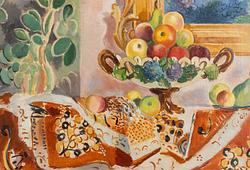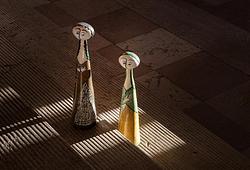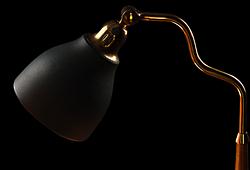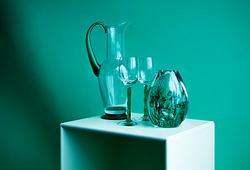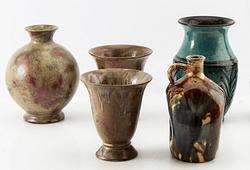Pablo Picasso
"La Femme à la Fenêtre"
Aquatint, 1952, on Arches paper, signed in pencil and numbered 19/50, printed by Lacourière. P. 83,4 x 47,5 cm. S. 90,1 x 63,9 cm.
Pale time staining, few small scratches in image, soft creases in left margin.
Provenance
Private Collection, Sweden.
Exhibitions
Svenska Handelsbankens jubileumsutsällning 6-24 maj, 1959, Moderna Museet Stockholm.
Literature
Bloch 695 (illustrated full page). Baer 891Bb1.
More information
Med sin kraftfulla och dramatiska utstrålning fångar den stående kvinnofiguren genast betraktarens intresse. "La Femme à la Fenêtre" är ett verk som i minsta detalj genomsyras av Picassos originalitet och omisskännliga sätt att återge sin omvärld på.
Kontrasten mellan ljus och mörker, den intensiva svärtan och det starka ljuset som faller in genom fönstret, samt skuggorna i kvinnans ansikte förhöjer dramatiken i bilden. Kvinnans blick utstrålar trots de långt drivna kontrasterna ett märkligt lugn, och de upphöjda händerna för tankarna till en välsignande eller välkomnande gest. Harmoni och andlighet är det bestående intrycket och förmedlas mästerligt med hjälp av den teknik som Picasso valt att arbeta med - akvatintetsningen. Akvatint är en så kallad tonetsningsmetod som började användas i Frankrike i slutet av 1700-talet. Vanligen låter man ett fint pulver falla över plåten, som sedan värms fast innan man etsar den. Resultatet blir vid tryckningen en kornig ton som liknar de många mjuka schatteringarna hos en akvarell.
1952-1953 utförde Picasso åtta etsningar i stort format. Två motiv är hämtade ur sviten Corrida, fyra från djurvärlden och två kvinnoporträtt, "L'Égyptienne" och auktionens "La Femme à la Fenêtre". Kvinnoporträtten är till formatet de största grafiska blad konstnären utfört. "La Femme à la Fenêtre" är ett av de mest betydande grafiska verken och ett centralt verk i Picassos samlade grafiska oeuvre.
Designer
Pablo Picasso (1881-1973), Spanish painter, printmaker, sculptor, and ceramist. Active in France since 1900. He is, alongside Matisse, the most dominant artist of the 20th century. After passing through a blue period, a pink period with circus scenes and harlequins, he created his first cubist painting, "Les Demoiselles d'Avignon," in 1907 under the influence of African sculptures. Together with Braque, he further developed cubism by breaking down surfaces, which were then represented in various simultaneous aspects. In 1912, he left nature and recreated a new reality, only to return to acrobats in 1916. During the 1920s, he approached surrealism and worked with whimsical forms while also producing drawings and etchings in line style. During the Spanish Civil War, he was violently stirred, and it is now that his great protest in the painting Guernica comes to fruition. In the late 1940s, he settled by the Mediterranean and produced nymphs, centaurs, and fauns, as well as paraphrases of the works of old masters, and painted powerful terracotta ceramics in Vallauris. His abundant graphic production follows the same development as his painting.
Pablo Picasso was not only an artist but also a skilled ceramist. During his lifetime, he created hundreds of ceramic works, such as jugs, vases, and plates. Picasso's passion for ceramics began when he visited the annual ceramics exhibition in Vallauris in southern France in 1946 and was introduced to the craft by the artist couple Suzanne and Georges Ramié, who owned the Madoura pottery. During the following years which he spent in Vallauris, Picasso met his second wife, Jacqueline Roque, whom he depicted on the ceramic pieces. He also decorated the ceramics with abstract animals and bullfighters in a cubist style.
Read more



